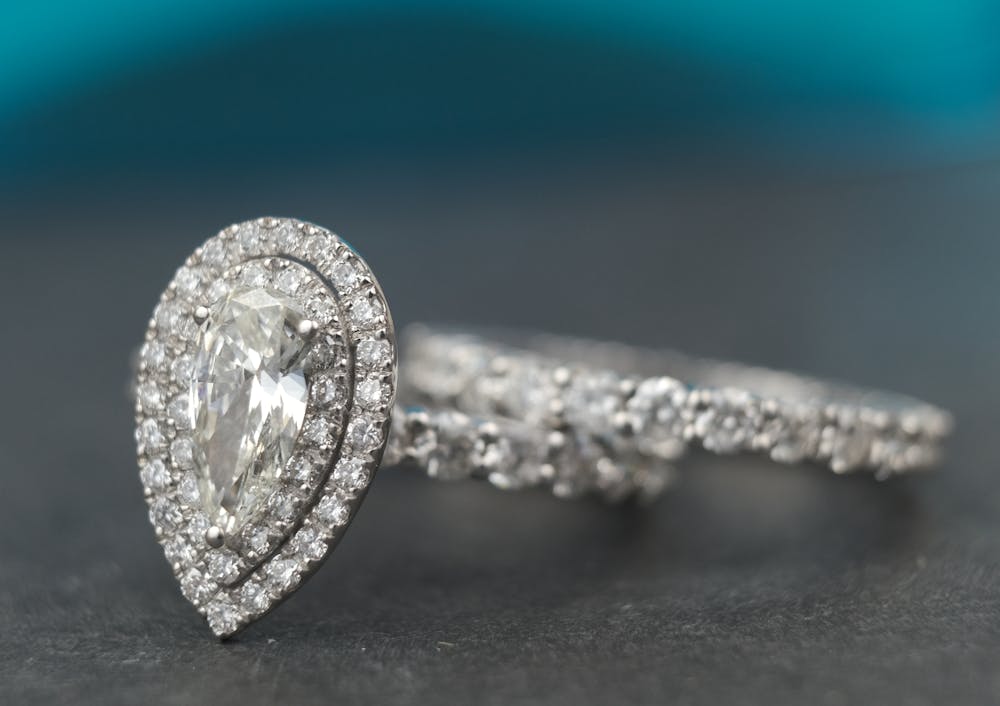Are you looking for an ethical and sustainable engagement ring? Unsure where the diamonds in the ring come from? Worried it might be a conflict diamond or even a blood diamond? In this article, I’ll recommend 100% ethical and sustainable alternatives to traditional diamond rings and explore what to consider when choosing an engagement ring that truly aligns with your values. Ready? Let’s dive in…
Two 100% Ethical & Sustainable Alternatives to Traditional Diamond Engagement Rings
1. Consider Lab-Grown Diamonds
Lab grown diamond engagement rings are quickly becoming one of the most popular choices for ethically-minded couples. These diamonds offer the same beauty and brilliance as natural diamonds but typically cost just one-tenth of the price.
Unlike natural diamonds, which come with high environmental and ethical costs, lab grown diamonds are created in a controlled lab environment that replicates the natural diamond formation process. They share the exact same chemical composition and physical properties as natural diamonds, but their production does not harm the environment or violate human rights the way diamond mining often can.
Note: When purchasing a lab-grown diamond engagement ring, be sure the diamond is certified by a reputable institution such as the Gemological Institute of America (GIA) or the International Gemological Institute (IGI). These certifications help ensure the quality and authenticity of the diamond.
2. Explore Moissanite Rings
Moissanite engagement rings are another sustainable alternative to traditional diamond rings. Moissanite is a gemstone originally discovered in a meteorite crater, known for its diamond-like appearance and stunning brilliance. While it’s often mistaken for a diamond, moissanite is actually a unique mineral with its own distinct properties.
Moissanite is an excellent eco-friendly choice because 99% of the moissanite on the market today is lab-created, involving no harmful mining practices. (Natural moissanite is extremely rare—even rarer than diamonds.) It’s incredibly durable, with a Mohs hardness of 9.25, making it a perfect choice for a long-lasting ring.
Additionally, moissanite is significantly more affordable than diamonds—a high-quality 1-carat moissanite stone typically costs around $300, meaning you can own a beautiful, high-quality gemstone at just a fraction of the cost.
What Else Should You Consider Besides the Gemstone?
The gemstone is just one part of an engagement ring. If you want your ring to be truly ethical and sustainable, there are a few more key aspects to keep in mind:
1. Look for Ethically Sourced Gold or Platinum Settings
While the gemstone often takes center stage, the metal used in your engagement ring is just as important. Gold and platinum are among the most common metals used, but not all gold and platinum are created equal. To ensure your ring is ethically sourced, look for jewelry made from fairmined gold or recycled metals.
Fairmined gold is extracted using practices that are socially and environmentally responsible, ensuring miners are treated fairly and environmental impact is kept to a minimum. Recycled metals, on the other hand, reduce the demand for new mining, helping preserve natural resources.
Platinum is another popular choice for engagement rings due to its durability and hypoallergenic properties. When purchasing a platinum ring, look for jewelers who use recycled platinum or source their platinum from reputable suppliers that meet ethical standards.
2. Choose a Transparent Jeweler
Choosing the right jeweler is just as important as choosing the right gemstone. These days, many jewelers offer ethically made rings and are fully committed to sustainable practices. One rising star in this space is MollyJewelryUS—a brand dedicated to sustainability, ethical production, and responsible sourcing.
All of their pieces are handcrafted using lab-grown gemstones, recycled gold, 100% conflict-free diamonds, and sustainably sourced natural gems. Their custom service allows each customer to hand-pick their gemstone and metal combination, making it easy to design a ring that reflects both your personal style and your values.
3. Consider the Environmental Impact of the Ring
Beyond selecting a sustainable gem and metal, you should also consider the overall environmental footprint of your engagement ring. Many ethical jewelers are working to reduce their carbon footprint by using eco-friendly packaging, minimizing waste, and incorporating sustainable practices throughout the production process.
Final Thoughts
Choosing an ethically and sustainably sourced engagement ring is a beautiful way to celebrate love—while also making a positive impact on the planet. With a little research, the right jeweler, and the use of environmentally friendly materials, you can find a ring that’s not only stunning but also aligned with the values that matter most in today’s world.
So take your time, explore your options, and choose a ring that resonates with both your heart and your conscience. When you’re ready, MollyJewelryUS might be a thoughtful place to begin your search.





